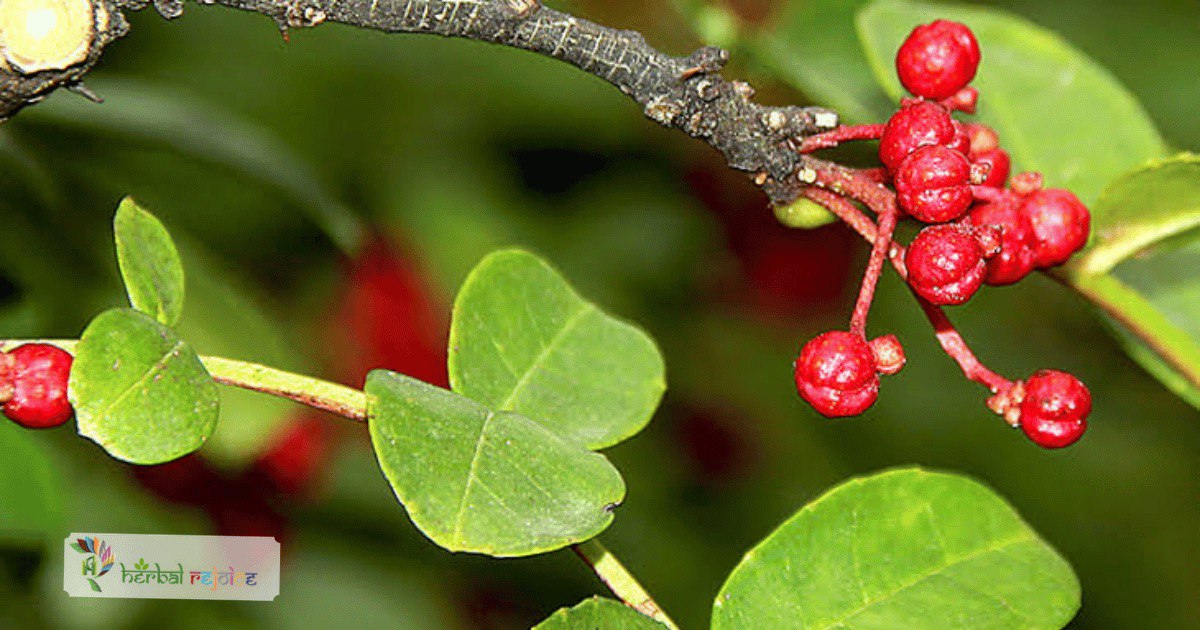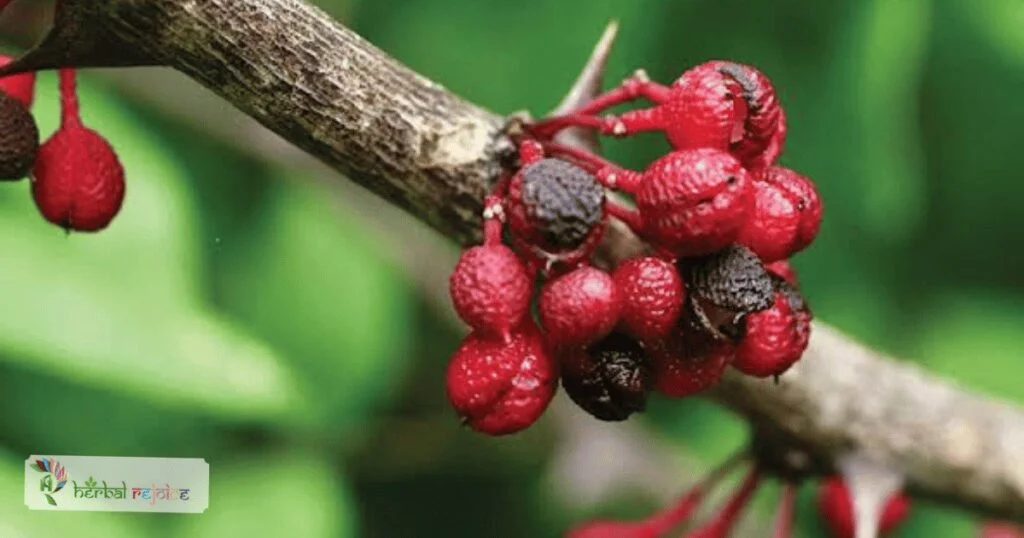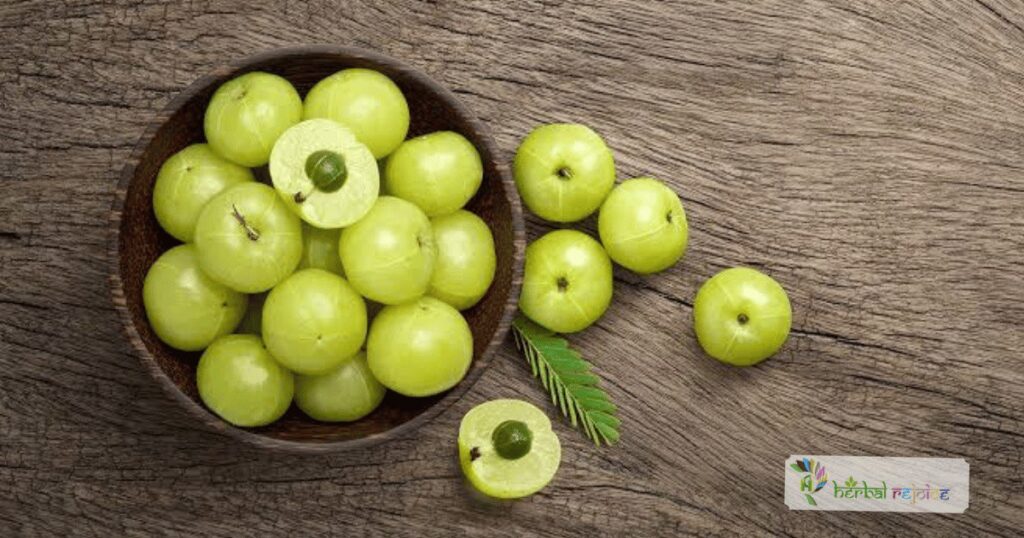Introduction
Zanthoxylum americanum Mill., commonly known as Toothache tree or Prickly Ash, is a plant species belonging to the Rutaceae family. It is native to Canada and North America. This plant has been traditionally used for its medicinal properties, particularly in the treatment of rheumatism and toothache. It is also known to have beneficial effects on circulatory insufficiency and fevers.
Traditional Uses Of Toothache Tree
The bark and berries of Toothache tree are used both internally and externally in traditional medicine. When used internally, they are believed to help alleviate rheumatism and toothache. When used externally, they can be applied topically to the affected area to provide relief.
Key Components of Toothache Tree
This plant contains several bioactive compounds that contribute to its medicinal properties. The bark ofT oothache tree contains alkaloids such as gammafagarine, beta-fagarine, magnoflorine, laurifoline, nitidine, chelerythrine, tembetarine, and candicine.
It also contains coumarins, including xanthyletine, xanthoxyletin, and alloxanthyletin. These compounds have been found to have various therapeutic activities.
Interestingly, related species of Zanthoxylum found in India also exhibit a similar pattern of chemical constituents and therapeutic activities. For example, the bark of Zanthoxylum armatum is commonly used for cleaning teeth.
The seeds of Zanthoxylum acanthopodium are extensively used in the preparation of tooth-powders. Additionally, the fruits of Zanthoxylum budrunga and the root of Zanthoxylum nitidum are prescribed for toothache.
Potential Health Benefits of Toothache Tree
In recent years, there has been growing interest in the use of natural remedies for various health conditions, including rheumatism and toothache. Many people are turning to traditional medicine and plant-based remedies as an alternative or complementary approach to conventional treatments.
Toothache tree, with its long history of traditional use and promising medicinal properties, is gaining recognition as a natural remedy for these ailments.

Conclusion
In conclusion, Zanthoxylum americanum Mill., commonly known as Toothache tree or Prickly Ash, is a plant species with medicinal properties that have been traditionally used for the treatment of rheumatism and toothache.
Its bark and berries contain various bioactive compounds that provide therapeutic benefits.
Frequently Asked Questions
What is Toothache Tree?
Toothache Tree is a plant species commonly known as Toothache tree or Prickly Ash. It belongs to the Rutaceae family and is native to Canada and North America.
What are the traditional uses of Toothache Tree?
Toothache tree has been traditionally used for its medicinal properties, particularly in the treatment of rheumatism and toothache. It is also known to have beneficial effects on circulatory insufficiency and fevers.
How is Toothache Tree used in traditional medicine?
The bark and berries of Toothache tree are used both internally and externally in traditional medicine. When used internally, they are believed to help alleviate rheumatism and toothache. When used externally, they can be applied topically to the affected area to provide relief.
What are the bioactive compounds found in Toothache Tree?
Toothache tree contains several bioactive compounds, including alkaloids such as gammafagarine, beta-fagarine, magnoflorine, laurifoline, nitidine, chelerythrine, tembetarine, and candicine. It also contains coumarins, including xanthyletine, xanthoxyletin, and alloxanthyletin.
Are there related species of Toothache Tree with similar properties?
Yes, related species of Zanthoxylum found in India also exhibit a similar pattern of chemical constituents and therapeutic activities. For example, the bark of Zanthoxylum armatum is commonly used for cleaning teeth, and the seeds of Zanthoxylum acanthopodium are extensively used in the preparation of tooth-powders. The fruits of Zanthoxylum budrunga and the root of Zanthoxylum nitidum are also prescribed for toothache.
Why are natural remedies gaining interest?
In recent years, there has been growing interest in the use of natural remedies for various health conditions, including rheumatism and toothache. Many people are turning to traditional medicine and plant-based remedies as an alternative or complementary approach to conventional treatments.
What are some relevant keywords for Toothache Tree?
Some relevant keywords for Zanthoxylum americanum could include “Toothache tree,” “Prickly Ash,” “Zanthoxylum americanum,” “rheumatism,” and “toothache remedy.
What are the traditional uses of Prickly Ash in North America?
Prickly Ash, or Toothache tree, has been traditionally used in North America for its medicinal properties. It is known to be beneficial for rheumatism, toothache, circulatory insufficiency, and fevers.
What are the bioactive compounds found in the bark of Toothache Tree?
The bark of Zanthoxylum americanum contains several bioactive compounds, including alkaloids such as gammafagarine, beta-fagarine, magnoflorine, laurifoline, nitidine, chelerythrine, tembetarine, and candicine. It also contains coumarins such as xanthyletine, xanthoxyletin, and alloxanthyletin.


